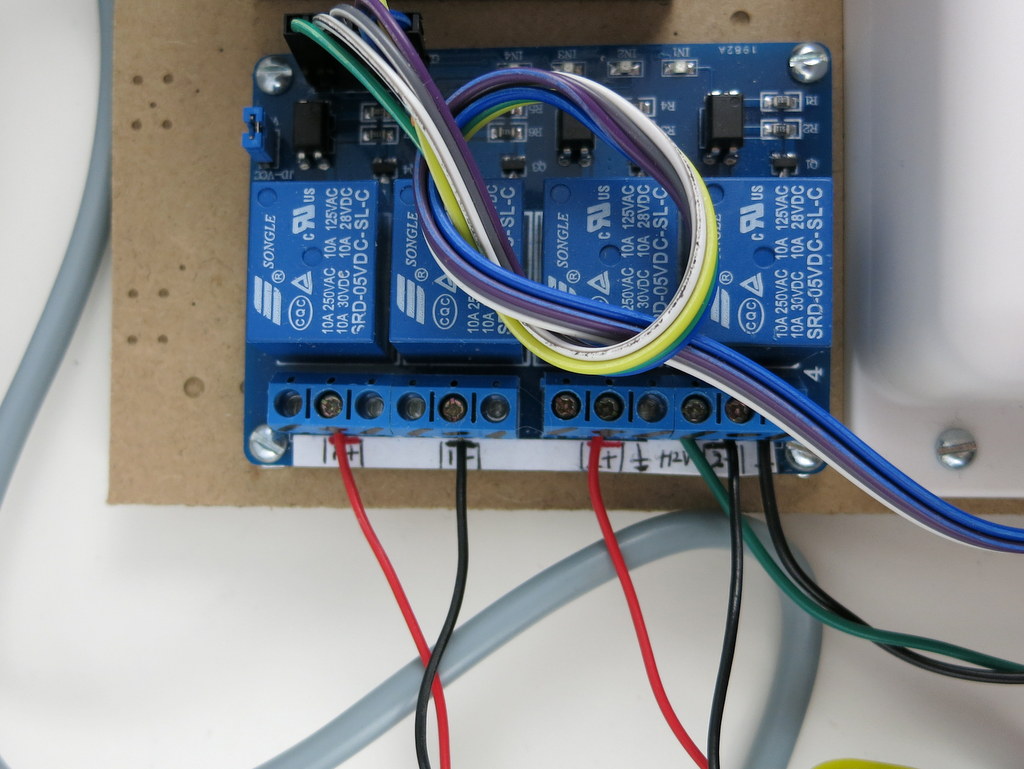

Also talk to a thermostat either a traditional 240V one or cleverer. That can hold a schedule, RTC and some relays. It is also faster to get up and running compared to building your own solution. I chose this over opensprinkler since this setup only required a cheap relay board. Presumably the best solution for heating control, like this lawn waterer, is to have a low power controller, such as an ATmega, and some custom electronics+ relays. Last summer I installed a sprinklerpi box for my sprinkler system. Depending on your setup, you may also find a Master Zone (or Pump Start Relay) wire, and Rain Sensor wires, and Flow sensor wires (if using any such sensor). On an active high relay board this should mean all the relays (and associated status leds) are off. Note that following a system reset, each of those GPIO pins are by default INPUT pins rather than OUTPUT and each has a pull down resistors connecting it to ground. This causes the poor relays to thrash, which in turn makes them sicker. I am interested in both the relay led, if one is present, and the relay itself. However, in this case, you need to add an additional flyback diode (between the collector of the transistor and the +12V line). It is also possible to use the NPN transistors to directly drive the relays. The OpenSprinkler running a self test that turns on each station for 3 seconds. No monitoring possible, at least not easy. But opensprinkler does use an external chip to control the output. Problem is, that I have one more electric valve far from my basment. So their repair is mostly replacing the relays (dead cheap).īecause of the logic states required to run a combie sick relays cause all sorts of problems cos a relay can contact, the board’s happy to switch the next device, and then earlier relay changes its mind so forcing the controller to backtrack. Here is a video showing the relay board in action. Now i have one Pi in my basment where I have a relay board with 4 relays and two electric valves.

The 240V relays on the edges get trashed. OpenSprinkler Unified Firmware for OpenSprinkler ESP8266 WIFI 4 Channels Relay Module AC DC ESP 12F Development Board - GitHub - solideus/OpenSprinkler-ESP8266-WIFI-4-Channels-Relay-Module-AC-DC-ES. What happens is that the extra-low voltage electronics lasts for ever. There’s a company that sells refurbed boards for a fraction of the price of a new one. SoI pulled out a spare RPi2 from storage, ordered up a cheap relay board made of pure Chinesium, and got to work.
OPENSPRINKLER WITH RELAY BOARD PC
Marginally OT, but the circuit board for a combie boiler wear out after a few years. OpenSprinkler seems to be the best in the DIY irrigation game at this time, but their hardware prices are out of my range. This is a fun project for building your own PC controlled watering system using a cheap parallel relay controller, a screwdriver, off the shelf solenoid valves, a power supply for the valves, some basic level wiring and soldering which can be completed by anyone, and of course, some clever VB.NET/C :).


 0 kommentar(er)
0 kommentar(er)
